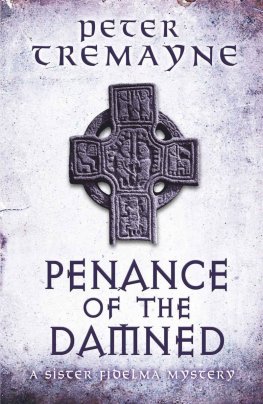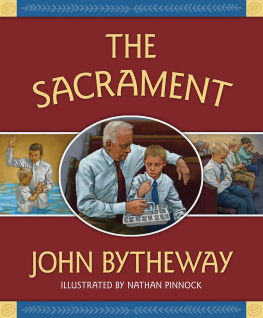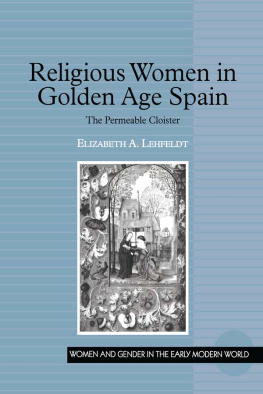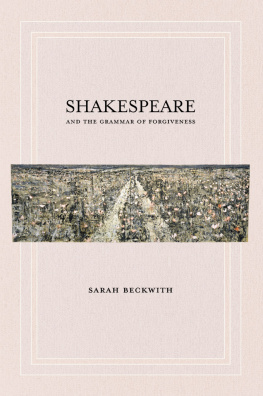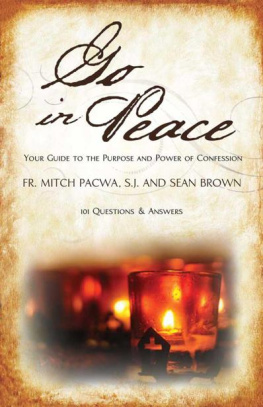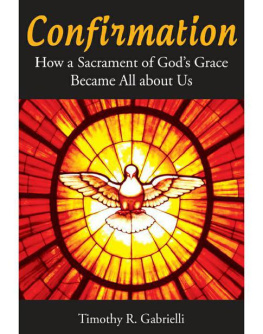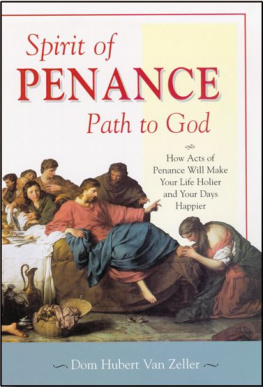THE SACRAMENT OF PENANCE AND RELIGIOUS LIFE IN GOLDEN AGE SPAIN
Patrick J. OBanion
THE PENNSYLVANIA STATE UNIVERSITY PRESS UNIVERSITY PARK, PENNSYLVANIA
Portions of the text were previously published in Patrick J. OBanion, A Priest Who Appears Good: Manuals of Confession and the Construction of Clerical Identities in Early Modern Spain, in Dutch Review of Church History, vol. 85, The Formation of Clerical and Confessional Identities in Early Modern Europe, edited by Wim Janse and Barbara Pitkin (Leiden: Brill, 2006), 33348.
Library of Congress Cataloging-in-Publication Data
OBanion, Patrick J., 1975
The sacrament of penance and religious life in golden age Spain / Patrick J. OBanion.
p. cm.
Summary: Explores the role of the sacrament of penance in the religion and society of early modern Spain. Examines how secular and ecclesiastical authorities used confession to defend against heresy and to bring reforms to the Catholic Church
Provided by publishers.
Includes bibliographical references (p. ) and index.
ISBN 978-0-271-05899-3 (cloth : alk. paper)
1. PenanceSpainHistory.
2. Catholic ChurchSpainHistory.
3. SpainReligious life and customs.
4. Catholic ChurchDisciplineHistory.
5. Church disciplineHistory.
6. ConfessionHistory.
I. Title.
BX 2260.023 2013
264'.020860946dc23
2012017709
Copyright 2012 The Pennsylvania State University
All rights reserved
Printed in the United States of America
Published by The Pennsylvania State University Press,
University Park, PA 168021003
The Pennsylvania State University Press is a member of the Association of American University Presses.
It is the policy of The Pennsylvania State University Press to use acid-free paper. Publications on uncoated stock satisfy the minimum requirements of American National Standard for Information SciencesPermanence of Paper for Printed Library Material, ANSI Z39.481992.
This book is printed on Natures Natural, which contains 30% post-consumer waste.
FOR Rachel
CONTENTS
ACKNOWLEDGMENTS
After being so long at work on a project about sin and its forgiveness, its difficult not to feel a strong sense of the debts I owe and the mercies I have received, for they are many. Like a good confessor, Hal Parker has served as a mentor for many years, always encouraging and available, both trustworthy and probing, and patiently willing to listen and instruct. I am honored to have received his attention as a doctoral student and continue to be grateful for his friendship. Over the years, Christine Caldwell Ames, Jodi Bilinkoff, Wietse de Boer, John Edwards, Phil Gavitt, Jim Hitchcock, Tom Madden, Nick Paul, Carla Rahn Philips, Richard Pym, Erin Rowe, Damian Smith, and too many others to name have offered helpful suggestions, read drafts, and given prudent criticism.
Throughout the course of this project, I was fortunate to receive funding from a number of institutions. Without their support I would not have been able to work in the libraries and archives of Spain or to spend time analyzing and writing about what I found there. I offer special thanks to the Fulbright Foundation, the American Historical Association, the ACLS, the Andrew W. Mellon Foundation, and the Program for Cultural Cooperation Between Spains Ministry of Culture and United States Universities. My time abroad was the richer for having met and learned from James Amelang, Ray Ball, Nick Bomba, Mercedes Garca-Arenal, Bill Goldman, Mayte Green-Mercado, J Melvin, and Mara Tausiet.
Closer to home, the generosity and encouragement of many people have sped this book toward completion. Jason and Camden Chang, Chris and Jessica Chong, Walker and Kirsten Cosgrove, Lloyd and Heather Jackson, Brian Lee, Max and Chrissy Seraj, and Jay and Jen Simmons have opened their hearts and homes in unforgettable ways. An ever-growing number of Beneses, OBanions, Azars, Vander Meulens, and Westenbroeks have provided the support that only family can offer. At Lindenwood University, Jeff and Kris Smith have helped me negotiate the demands of teachings and writing. By right, my most heartfelt expression of thanks goes to my wife, Rachel. She has not only patiently endured the time it has taken to complete this project; she has rejoiced with me in my vocation along the way. This book is for her.
ABBREVIATIONS AND CONVENTIONS
| ADC | Archivo Diocesano de Cuenca |
| AGS | Archivo General de Simancas |
| CCC | Consejo y Comisara de Cruzada |
| PRCD | Patronato Real, Concilios y Disciplina Eclsiastica |
| PRCS | Patronato Real, Cruzada y Subsidio |
| AHN | Archivo Histrico Nacional de Espaa (Madrid) |
| BAV | Biblioteca Apostolica Vaticana (Rome) |
| BNM | Biblioteca Nacional de Espaa (Madrid) |
| doc. | documento |
| exp. | expediente (record) |
| Inq. | Inquisicin |
| leg. | legajo (file) |
| MHSI | Monumenta Historica Societatis Iesu |
| p.a. | primera audiencia (first audience) |
For unfoliated inquisitorial manuscripts, the date of the testimony or a description of where in the trial documents the citation occurs (e.g., primera audiencia) has been provided. If a manuscript comprises a single folio, no folio number is given.
Modern accents have been added to proper names, but original spelling has been retained as it appears in the source documents unless a standard English equivalent exists: Ysabel Martnez, but Teresa of Avila. A similar convention has been used with place-names.
INTRODUCTION
There is a corresponding increase both in the priests power and of his knowledge. The power and knowledge of the priest and church are caught up in a mechanism that forms around confession as the central element of penance.
MICHEL FOUCAULT
During the summer of 1581, the inhabitants of Los Sauces on the island of La Palma in the Canaries alerted the Inquisition that one Pantalen de Casanova had, for some years, shirked his annual duty to confess.
Casanova found the Holy Office as unimpressed by his attempts to avoid prosecution as it was unhappy about his repeated failures to confess. It considered him suspect of heresy for having remained aloof from the sacraments of penance and the Eucharist for so long. Many of his neighbors testified against Casanova. Not even his parish priest (cura) could offer protection; he had never confessed the defendant.
The sacrament of penance, one of the seven sacraments of the Roman Catholic Church, which served as conduits of grace between God and the faithful, had its roots in sinful humanitys need to be reconciled with a holy deity. That need for forgiveness went beyond merely addressing the actual sins that people committed on a daily basis, for everyone was born separated from God as a consequence of Adams rebellion. This state of original sin necessitated the cleansing waters of baptism, which infused grace and made the recipient a beneficiary of Christs meritorious sacrifice on the cross. Baptism cleansed sinners of the guilt


